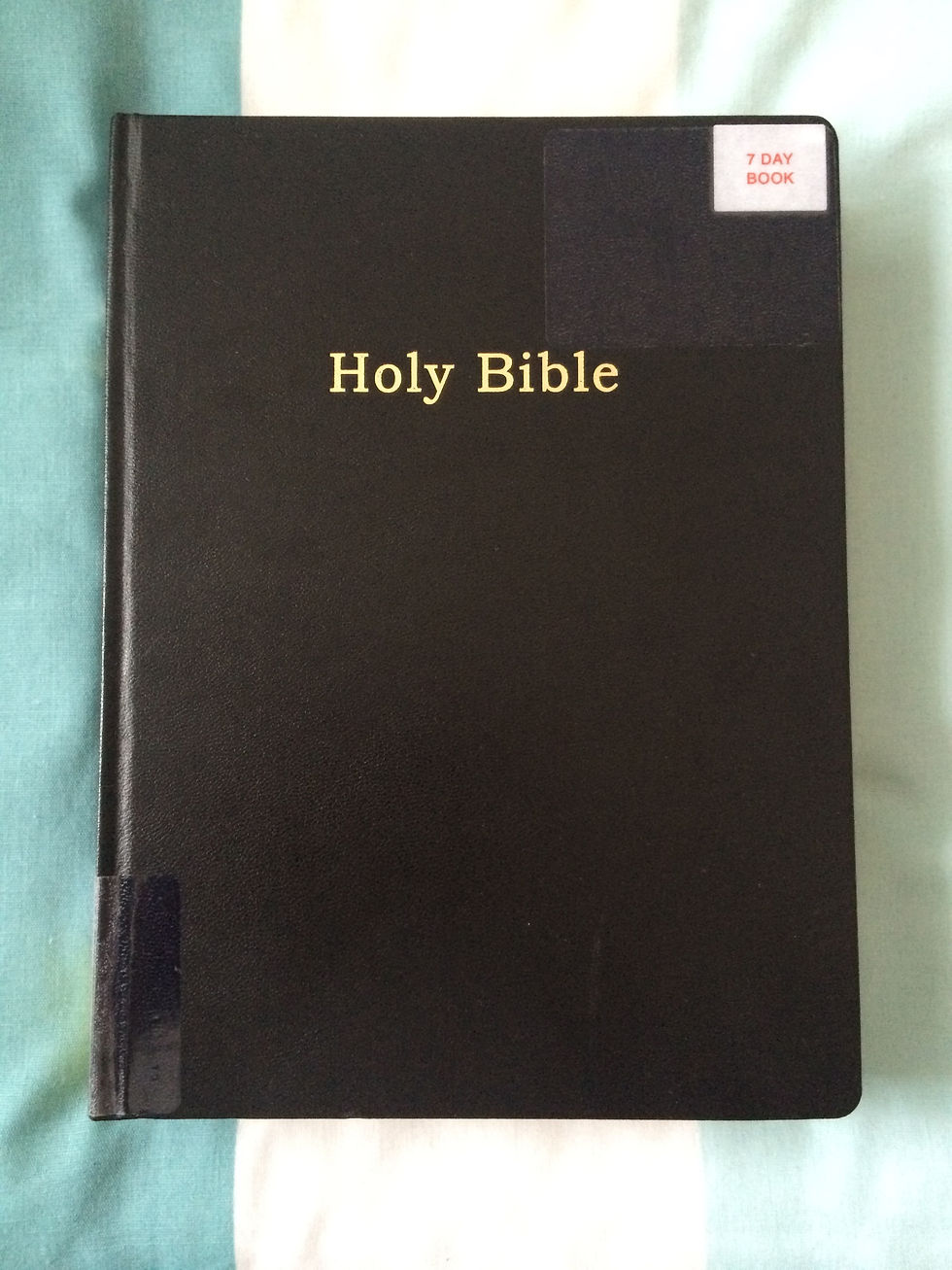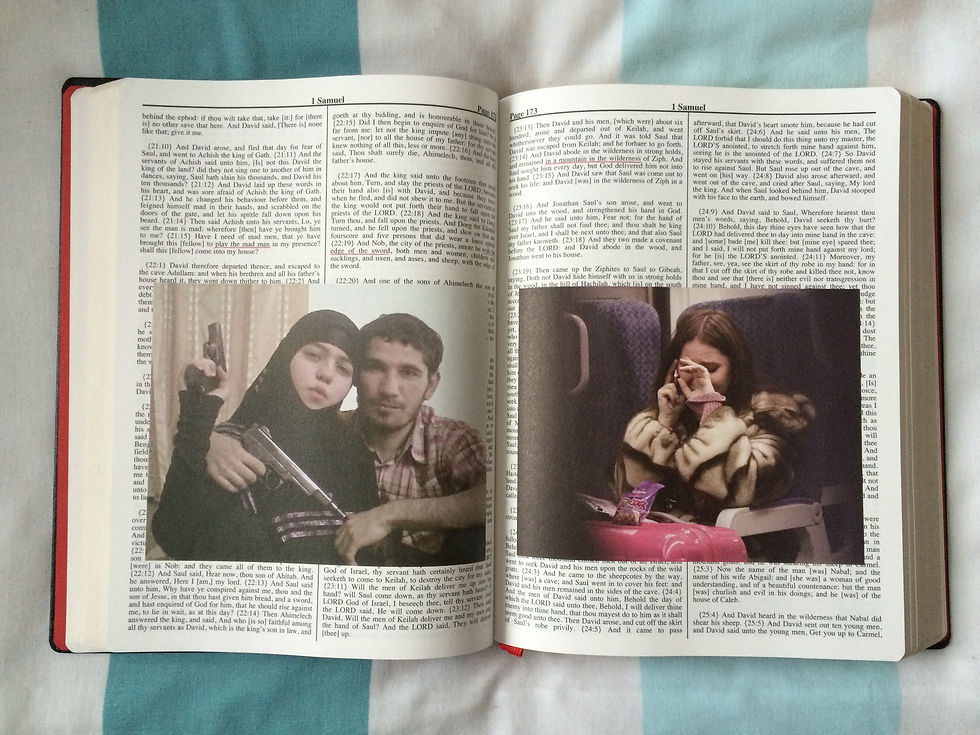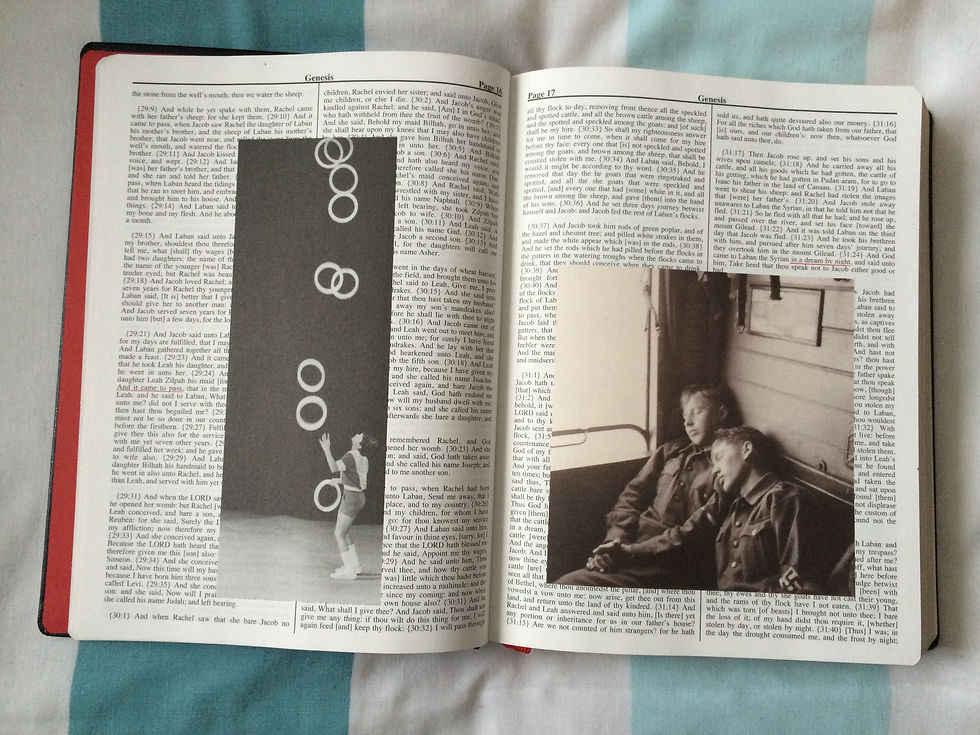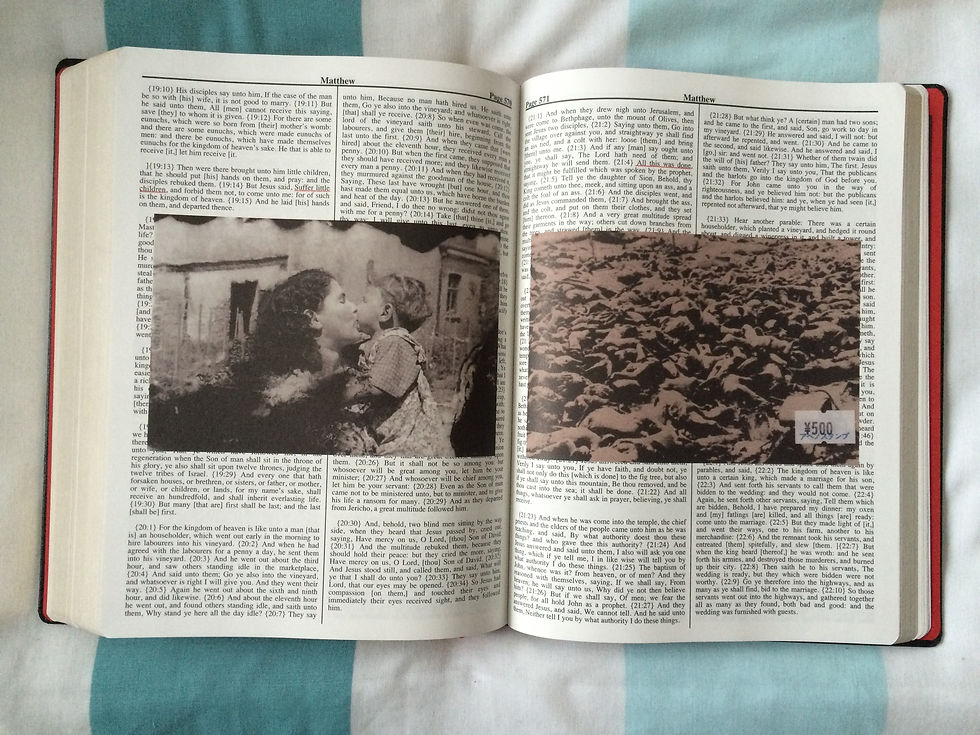Mixed Media Research
- Dave Macey

- Nov 6, 2015
- 4 min read

The Holy Bible
Adam Broomberg and Oliver Chanarin
A critique
When first looking at The Bible, we are confronted with just a plain black cover that does not look like a photo book, but like a traditional bible. The cover is plain with just the words Holy Bible embossed in gold on the front and the side, there is nothing to set it apart from any normal traditional bible. Even the edges of the paper have gold printed on them and the paper is also the same that you would find within a normal bible, along with the ribbon that acts as the bookmark.

Having the artwork presented in this way does two things, it makes a strong connection with the genuine bible and can also disarm the viewer as to its content. This can be interpreted as establishing the initial shock value of the content but also sows the seeds for the juxtaposition of the images, text and content. Indeed there are times when the text of the bible are turned against the intention of the bible.


One important point is that none of the text has been altered. This can be interpreted as another way of looking at the bible, that a different dialogue hasn’t been imposed on the bible, just a different interpretation. It demonstrates how the bible is open to interpretation that can differ from the established and orthodox viewpoint.
Moving onto the pages themselves, they have had photographs printed directly onto the pages and they are not stuck loosely to the page. With this being the case it demonstrates how integral the images are, they have been included with the bible. They are not separate to, but have become an integral part, the same as the text is. However, when looking at the pages, the photographs are noticed first and then the text and the impression is gained that the images are more prominent than the text. This can lead to the impression that the images are more important as they are visually easier and quicker to read than text.
The narrative for the images was originally inspired when Adam and Ollie were researching War Primer 2 and Bertlot Brecht. During their investigations they discovered Brecht’s Bible that had an image of a racing car stuck on the front. There were also notes written in the bible and newspaper clippings stuck onto the pages.
This provided a concept and the next step was to find a narrative. This was provided in the form of an essay called Divine Violence written by Adi Ophir, a philosopher from Israel, and is included in the back of the Holy Bible. According to Broomberg “We chose the bible because we were in communication with Adi and his text morally and politically shaped the project. The bible is his main concern and his reading of it – that the book is a parable for modern governance and its relation to catastrophe or punishment – rang true with our understating of the world but also of photography and its relation to power, to war, to catastrophe." (http://www.theguardian.com/artanddesign/2013/jun/11/deutsche-prizewinners-new-work-holy-bible)
With this perspective in mind, wanting to construct a narrative of power, conflict and control, they then used images from the Archive of Modern Conflict, which is based in London. The theme of the archive would provide a powerful narrative that fitted with their vision of the artwork.
So the end result is a photo book, that on the outside looks like and feels like a normal bible. However when it is opened we are confronted with images of war, Nazis, sex, dead bodies, guns and magicians. With this narrative being offered, instead of peace, understanding, love and tolerance, which could be expected, it can be interpreted as being offensive and blasphemous but also critical of religion. It does challenge the spiritual message within the bible, but it also challenges the authority and power of religion because it offers a different interpretation with its own words. That’s why it is important that no text was added or altered, only underlined, because it emphasises that it’s just another interpretation.
Another point worth mentioning is about shock value. Personally I’m not a fan of shock value, I feel that it fades quickly after the initial impact. Such is the case with this work, once the shock value has diminished we are left with the work of art itself. Too often after the shock value wears off there’s nothing left, but the Holy Bible still keeps me interested because the dialogue of power, control and conflict is strong enough to make the photo book work.
The last point to mention is the cynicism that is included in such a dialogue and juxtaposing it with the Holy Bible. As mentioned above, attacks on religion and the bible are not a new phenomenon and I feel that this does not break new ground, only reinforces such cynicism. I find the format and the presentation inspiring, but it could of trodden new ground if it avoided cynicism, even though it does successfully work as a photo book.
Resources used:



Comments